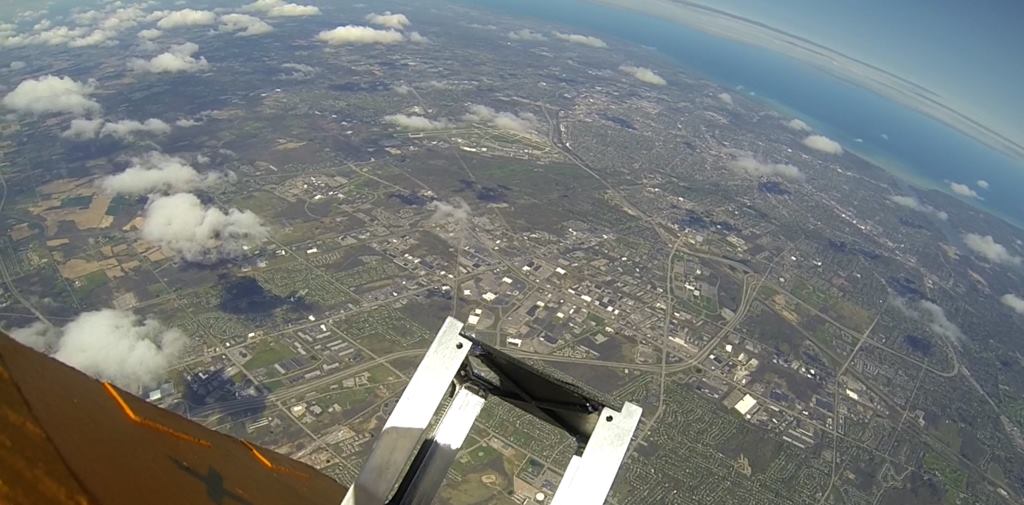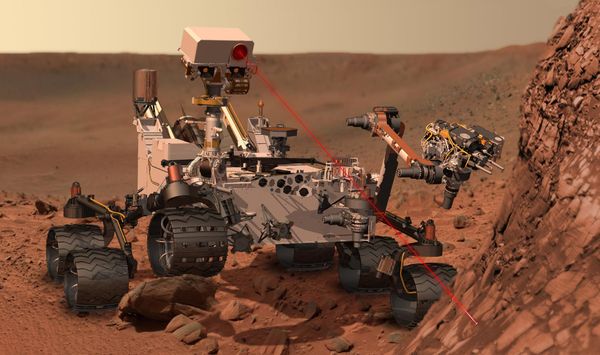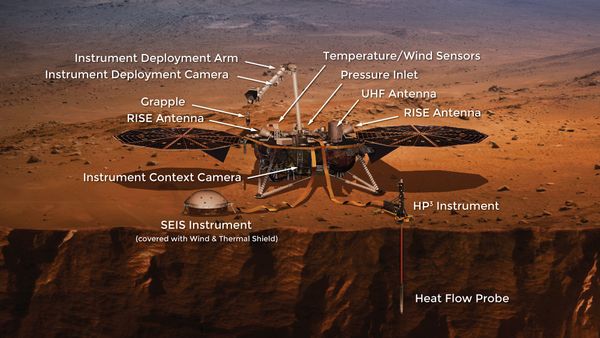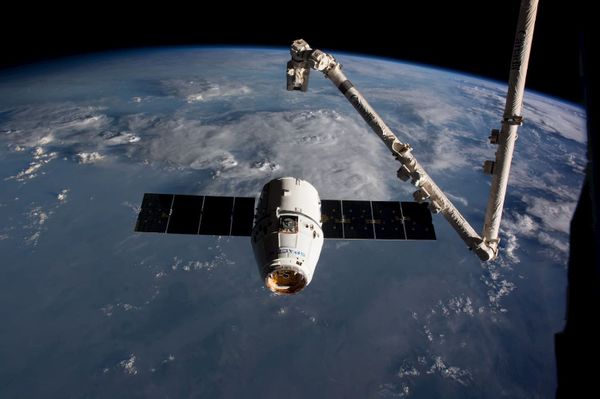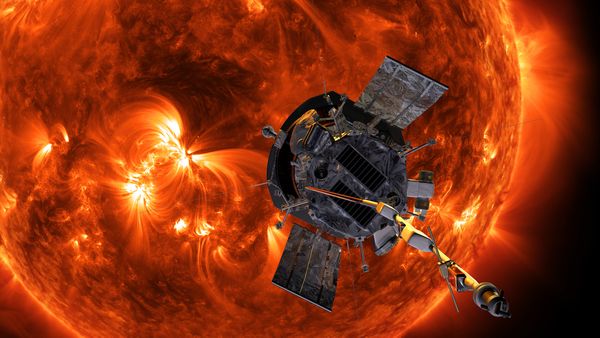Subscribe on iTunes, Google Play, or by RSS for more space exploration discussions. (View of Rochester from HAB2.
Via RIT Space Exploration
Today on SPEXcast, we'll be talking with members of RIT Space Exploration's High Altitude Balloon team about their upcoming launch.
Update 4/22/2018: The HAB4 launch was a success! RIT Space Exploration released HAB4 from Rochester, NY at 10:24am April 22, 2018 and travelled more than 70 miles to an area near Hector, NY. The HAB was recovered intact, and data retrieved from system memory shows that all sensors worked as intended for the duration of the flight. RIT SPEX continues to analyze payload and sensor data post-flight.
What is a HAB?
A high altitude balloon (HAB) is a catch-all term for activities (meteorology, scientific experiments, etc.) that utilize a balloon filled with lighter-than-air gas to rise through the first ~120,000 feet of atmosphere above Earth's surface. HABs tend to use a latex balloon filled with Helium to lift a parachute and payload. In the United States, high altitude ballooning is regulated by the FAA and FCC as part of the journey shares the airspace with commercial aircraft and HABs often include amateur radio communications. Enthusiasts of ballooning can participate in the Global Space Balloon Challenge, which aims to energize the ballooning community. Their website contains some great information on the basics of HAB components.

This chart shows the relative altitude of various objects in flight
SPEX HAB
The HAB team is our response for the need to test experiments, validate technology, and explore the "near-space" environment. The students (and some of the alumni) of RIT SPEX have built and flown three unique HABs and are preparing to launch again this April.
History of SPEX HAB program
HAB 1 Project Writeup
HAB4
This fourth launch by RIT SPEX is our most complex by a wide margin. It is the first flight of a newly designed structural frame, a new connection method for the parachute, and our heaviest launch to date. The new design addresses many of the problems of convenience seen in earlier launches. Much as the balloon plug made filling and releasing the balloon easier on HAB2, these changes make set up and integration easier. This is our heaviest launch because it includes our first scientific payloads. That's payloads with an 's'. In the past we have flown sensor boards and one tech. demo. This time we have a redesigned sensor board (without all of the connectors upside-down), a robust power distribution board, a larger (1500g) balloon, and our three scientific payloads. The payloads include two computer vision trials, one studying vegetation density mapping and the other determining orientation, and a tech. demo re-fly of the CubeSat frame that flew on HAB 2.
Where U At Plants? (WUAP)
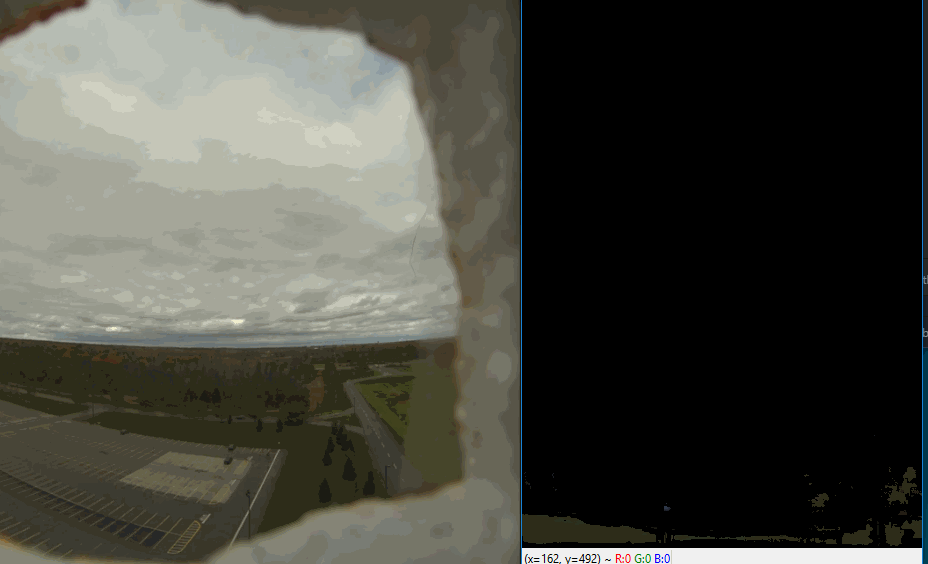
WUAP will detect the presence and density of vegetation at high altitudes
The payload with a silly name, Where U At Plants (WUAP), uses ground-facing Raspberry Pi cameras for vegetation density mapping experiments. WUAP applies some on board image processing and collects many images which will be used as the datasets for future development on the ground. WUAP is the first in a series of computer vision related HAB experiments.
WUAP consists of two Raspberry Pi 3 modules powered by Lithium-Polymer batteries. A regular Pi Camera V2 module is connected to one Pi, while a Pi Camera NoIR is connected to the other. These cameras are identical except the "NoIR" camera does not have an infrared filter in front of its sensor. Without an IR filter, the red channel of the RGB imaging sensor responds to infrared light in addition to visible red. Images from the visible-only (Vis) camera are used in a first-iteration vegetation mask using on-board processing. To generate a mask, RGB color data is transposed into the Hue-Saturation-Lightness (HSL) colorspace and filtered by a set range of acceptable HSL coordinates--basically, we tune a filter to only select "greenish" pixels, assuming that vegetation is green and non-vegetation is not. This is a primitive approach to vegetation detection, but it is good practice for future projects, and was developed completely remotely from the team at RIT by SPEXcast host Phil Linden in California.
Real-world Earth Observation missions use the Normalized Difference Vegetation Index (NDVI), and its advanced version, the Enhanced Vegetation Index (EVI), to map real vegetation density from space. NDVI takes advantage of the fact that the chlorophyll in plants strongly absorbs visible light for photosynthesis, and the cell structure of leaves strongly reflects in the near-infrared part of the spectrum. This allows us to estimate the number of leaves in an area with the ratio of the visible (VIS) and near-infrared (NIR) responses: NDVI = (NIR — VIS)/(NIR + VIS) which will always be between 0 and 1.
We intend to use the datasets acquired by WUAP to develop a computer vision or deep learning model for estimating vegetation density from only visible-light images, using the infrared and NDVI as our "ground truth" when training the models. Using HAB4's positional data, we might be able to cross-reference our estimates with real EVI data from the MODIS instrument in orbit.
Horizon detection
This payload uses two USB cameras with a partially shared focal plane to detect the balloon's orientation relative to the horizon.
Original Project description
Original Source Code
See the source code!
Balloon Plug
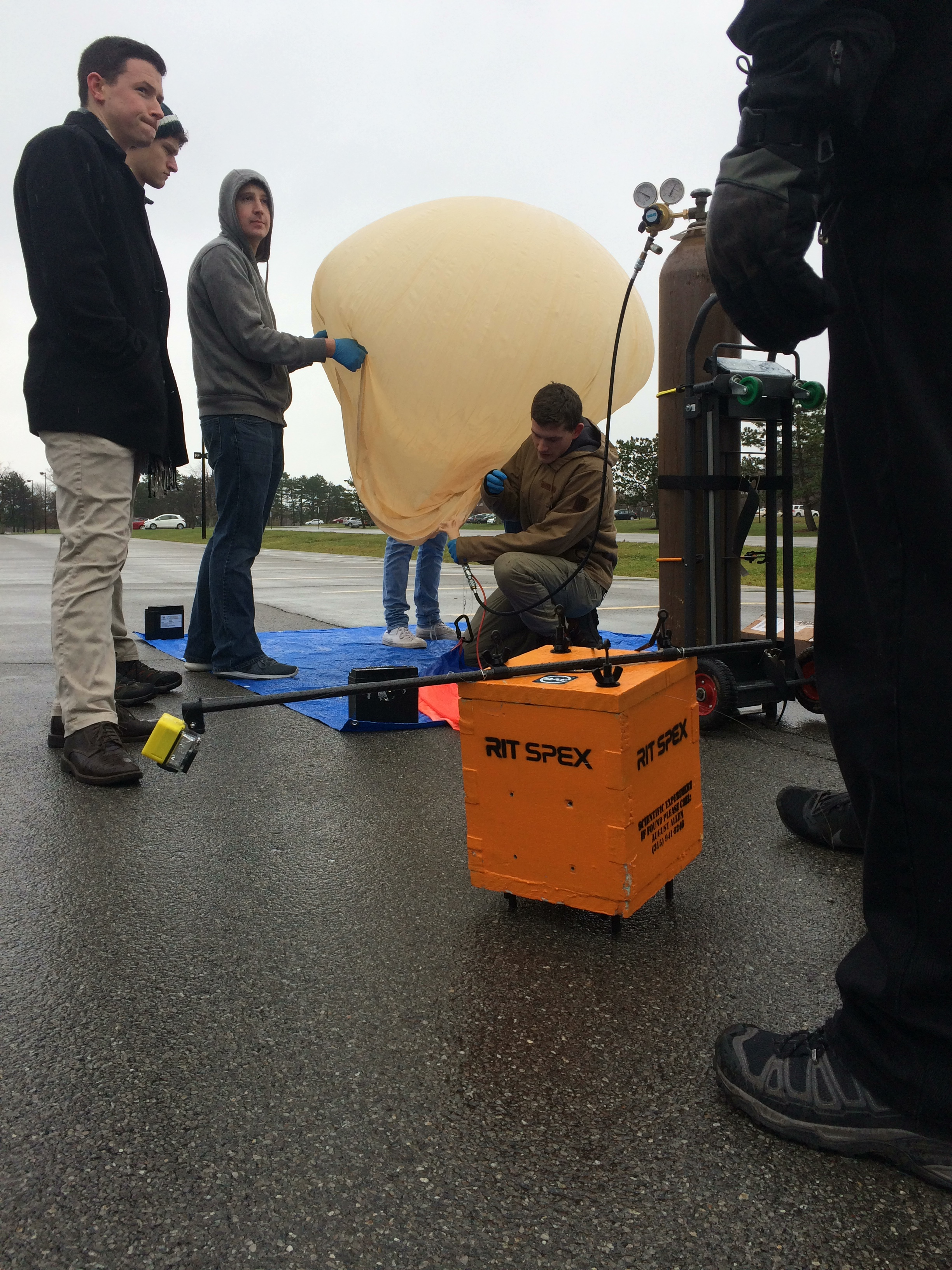
SPEX members hold down the balloon, while preparing to launch HAB3
James Parkus, the current student director of SPEX, has always wound up being the individual sitting under the balloon while it is being filled with Helium. His experience holding onto the balloon neck and forcing the Helium tube inside all while it was raining, cold, and windy, led him to design the balloon plug. This beauty does a better job of slowing the Helium escape rate than just tying off the neck. It also allows a quick disconnect to be used for filling and gives James something to hold onto while the balloon expands above him. It has been a huge improvement to the first method and is now an integral part of our launches.
Documentation on the SPEX balloon plug design
Multidisciplinary Senior Design
SPEX members and other seniors in the RIT Kate Gleason College of Engineering have been working on another HAB. These seniors are creating the High Altitude Balloon Instrumentation Platform (HABIP). It is an even more complex HAB than what SPEX is flying. HABIP has an array of cameras and communication technologies that allow streaming of flight video. The platform also includes a reaction wheel that will stabilize the instruments in the high-wind flight environment. More information about the team and their product can be found on their documentation page.
Considerations for flight
There are several good resources for HAB considerations. It is important to understand the FAA and FCC regulations before flying. Other considerations are the flight environment (temperature, acceptable wind shear accent rate, pressure, etc.), launch conditions, HAB hardware, and recovery. HABhub is a great tool as is the APRS site and the [wind visualizer] (https://www.windy.com).
If you would like to support the work these students are doing, check out ways to donate on their site.

